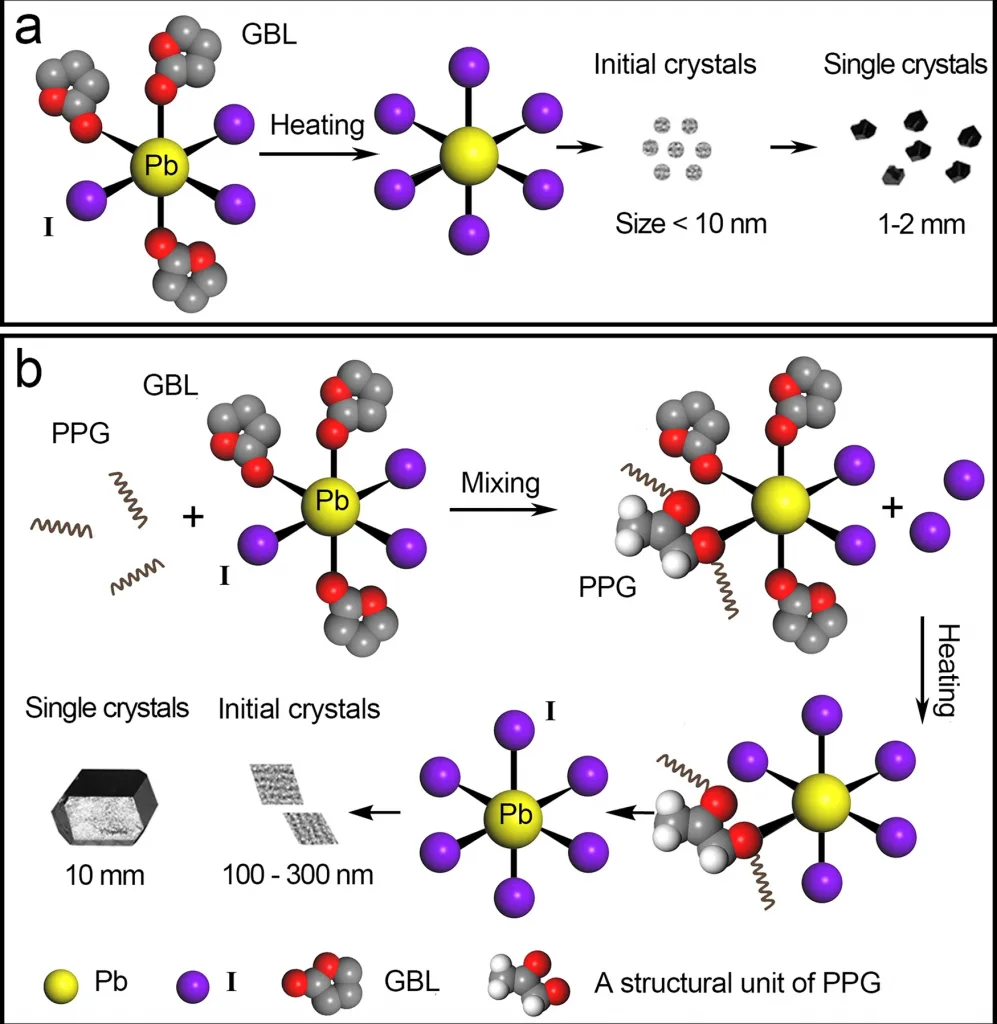BJUT’s Joint Research Achievement on Preparation of Organic-Inorganic Perovskite Single Crystals Published on Nature Communications
On April 1, Nature Communications published the paper “A Polymer Controlled Nucleation Route towards the Generalized Growth of Organic-Inorganic Perovskite Single Crystals” (Nat. Commun. 12, Article number 2023 (2021), DOI: https://doi.org/10.1038/s41467-021-22193-1), which is an achievement by the research group led by Yan Zhengguang, an associate researcher (co-corresponding author) from the Institute of Solid Microstructure and Properties under the Faculty of Materials and Manufacturing of BJUT, and Professor Zhou Xiaoyuan (co-corresponding author) of Chongqing University. BJUT is the first completion unit, Ma Lin, a doctoral candidate from the Institute of Solid Microstructure and Properties, is the sole first author, and the cooperative units are Chongqing University and Peking University.

In this paper, the mechanism of nucleation and growth of organic-inorganic perovskite single crystals in the growth solution is studied by means of electron microscopy – in-situ physicochemical property characterization technology and macroscopic physical property measurement, thereby developing a growth method of organic-inorganic perovskite single crystals with polymer controlled nucleation and stable growth solution. This method can deliver a series of high-quality large-size organic-inorganic hybrid perovskite single crystals with different compositions, including FAPbX3 (X=I, Br), MAPbX3 (X=I, Br, Cl), MAPb (I/Br)3, MAPb (Br/Cl)3, MA/FAPbX3(X=I,Br), CsPbBr3, etc., in which FAPbBr3 has a lifetime of 10199ns, about 4 times the data reported in the literature, setting the highest record for organic-inorganic perovskite single crystals with single A-site ion. This work provides a new technical method and theoretical basis for further improving the properties of organic-inorganic perovskite single crystals and potential large-scale generalized growth.
